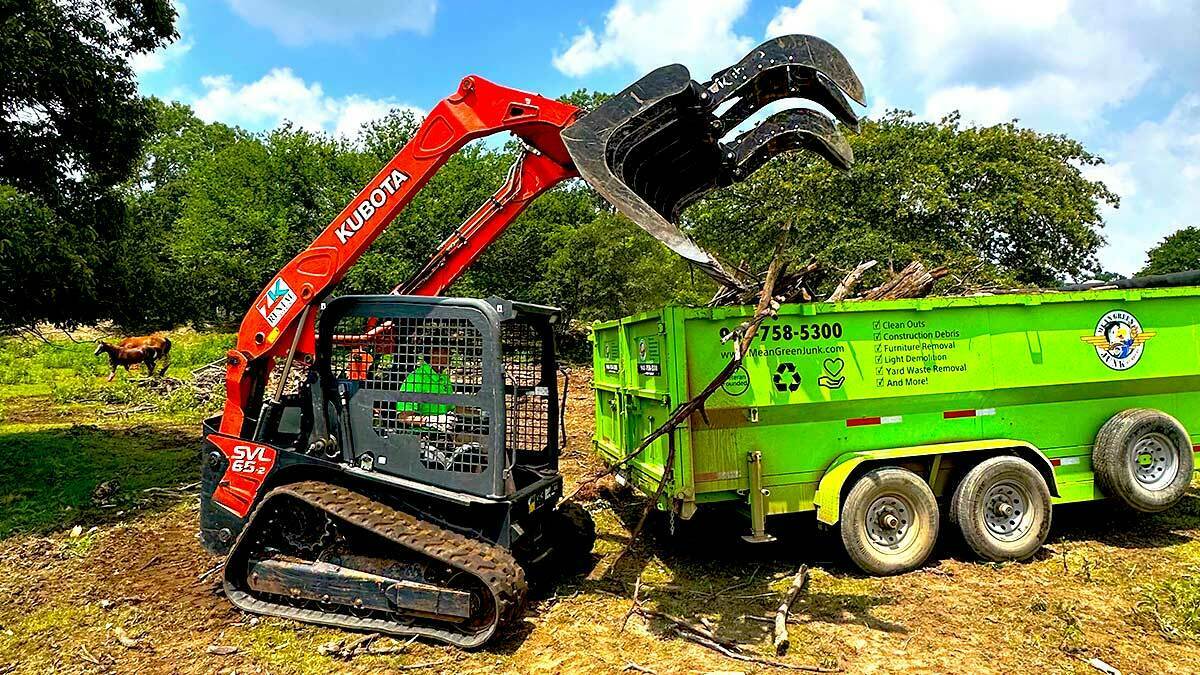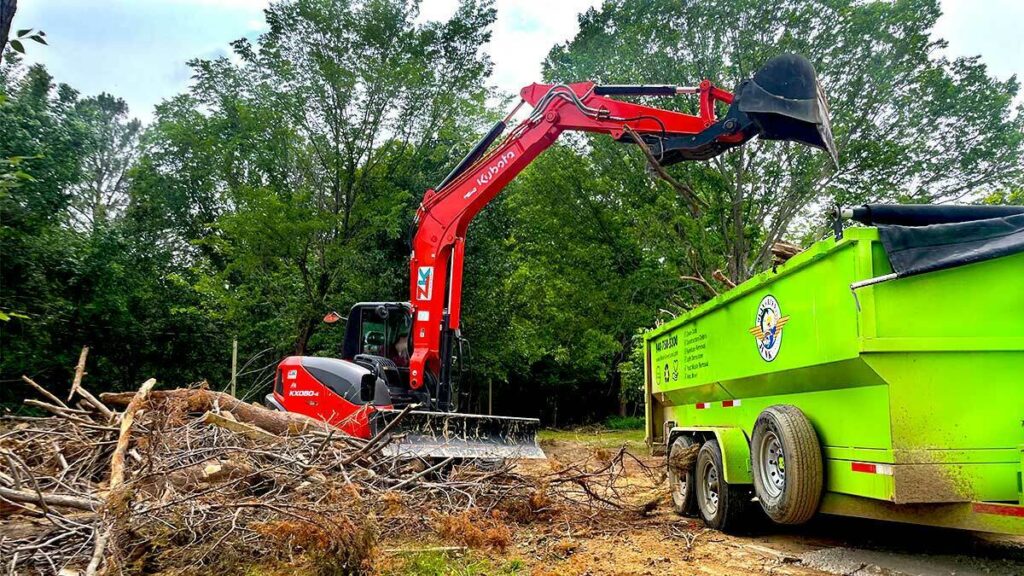
Debris Removal Checklist for Homeowners
As a homeowner, there are many reasons why debris can accumulate in your space, such as severe storms, renovations, and extensive cleanups. Despite the different causes, they all have one thing in common: debris buildup is overwhelming and unwelcome. When it’s time to clean up, it’s crucial to approach the task methodically and efficiently, whether you’re clearing out years of accumulated junk or managing the aftermath of a recent weather event.
Our checklist will guide you through debris removal and ensure your home is cleared safely and thoroughly.
Types of Household Debris
Household debris comes in many forms, and understanding the different types can help you plan for proper disposal. Common types of debris include:
Yard Debris
Yard debris includes anything found in your yard or garden. Common examples include:
- Branches and Tree Limbs: After storms or routine trimming, large tree limbs and branches can accumulate.
- Leaves and Grass: Fallen leaves, grass clippings, and other organic materials can clutter your yard.
- Soil and Rocks: If you’ve done any landscaping or grading, soil and rocks can become an issue.
- Weeds and Plants: Overgrown gardens or unmaintained areas often result in a buildup of plant debris.
Storm Debris
As a North Texan, you’re likely familiar with storm debris. This refers to any debris left behind by weather events like hail, floods, or tornadoes. This type of debris can include:
- Damaged Structures: Pieces of roofing, siding, or fencing may be torn off during a storm.
- Mud and Floodwater Residue: After floods, your yard or home may be left with a layer of mud or water-soaked materials.
- Downed Trees: Storms can bring down trees or heavy branches, often damaging property and blocking pathways.
Construction Debris
Renovating or remodeling your home can create a significant amount of waste, including:
- Drywall: Pieces of drywall, often broken during demolition.
- Wood: Leftover lumber from framing, shelving, or demolition.
- Nails, Screws, and Other Fasteners: These small but dangerous items can be scattered across your property and require careful disposal.
- Tiles, Concrete, and Brick: Materials left over from flooring or structural work, which are often heavy and bulky.
Household Waste
In addition to yard and construction debris, unwanted household items can accumulate, including things such as:
- Old Furniture: Broken or outdated furniture no longer used in the home.
- Appliances: Non-functioning appliances, including refrigerators, washing machines, and microwaves.
- Electronics (E-Waste): Old electronics like TVs, computers, and phones.

Debris Removal Checklist
Once you’ve identified the need for debris removal, it’s time to create a comprehensive removal plan. We always recommend starting with a thorough assessment of the situation.
1. Evaluate & Sort
Walk around your property and identify all areas affected by debris. Make a list of items that need to be removed and take photos for documentation, especially if you plan to file insurance claims.
If you handle the removal on your own, you’ll need to categorize debris into types: waste, recyclable items, reusable items, and hazardous materials. This classification helps determine how to dispose of everything properly. If you decide to work with a professional junk removal service, they will take care of sorting to ensure that each item is disposed of appropriately, whether that means the item goes to a donation facility, a recycling center, or a landfill.
2. Prepare for Safety
Safety first! Make sure to wear sturdy gloves, steel-toed boots, and safety goggles. Be extra cautious when handling hazardous materials like broken glass, nails, or chemicals. These materials require special handling and disposal.
3. Start With Large Debris
Begin by removing larger items from the area so you can navigate the space more safely and easily as the cleanup progresses. It’s important to clear these large obstacles first to facilitate a smoother cleanup process, whether a storm toppled your fence, a renovation created a pile of construction waste, or an old appliance was left behind.
4. Dispose of Smaller Debris
Once the larger items have been removed from the space, you can begin to tackle the smaller items. There are different best practices depending on the type of debris:
- Branch and Tree Removal: After a storm, branches and tree limbs often scatter across lawns. Cut and bundle these items for disposal.
- Leaves and Grass: Lawn debris such as leaves, grass clippings, and small twigs should be collected and composted or taken to a green waste facility.
- Storm Debris: If the storm caused flooding or other damage, remove debris like mud, sandbags, or fallen shingles. Storm cleanup often involves wet or contaminated debris, so be cautious when handling it.
5. Post-Cleanup Inspection
After all the heavy lifting is done, do a final walk-around of your property. Ensure that nothing is left behind, including small pieces of debris that might have been overlooked. We always encourage DIYers to dispose of any remaining waste in an environmentally responsible manner to minimize their environmental footprint.
6. Hire a Professional Junk Removal Company
Although this step is listed sixth, it could be your first and only step for debris removal. If you feel overwhelmed or lack the time and equipment for debris removal, hiring a professional junk removal company can help prevent injury, save time, and reduce stress. At Mean Green Junk Removal, we specialize in all types of debris removal, from yard waste to storm cleanup, and can haul away your junk safely and efficiently.
Take Back Your Space from Debris
Debris removal should result in a clean property, but doing it properly also means it is done safely and sustainably. By understanding the different types of household debris and following the debris removal checklist above, you can make sure that your cleanup is both effective and responsible.
If the task feels overwhelming, don’t hesitate to reach out to a professional junk removal company. Mean Green Junk Removal is here to help you clear the clutter quickly and efficiently—so you can get back to enjoying your clean, debris-free space. Reach out today for a quote, and let us take the burden of debris removal off your shoulders.
